Cómo leer los diagramas de ganchillo
Un diagrama de ganchillo consiste de símbolos, 1 símbolo = 1 punto – la definición del símbolo explica qué tipo de punto es/cómo se trabaja. El diagrama muestra todos los puntos vistos por el lado derecho (a menos que se especifique de otra manera).
Un típico diagrama de ganchillo se ve así:

1: 1. A.1 es el nombre del diagrama y se refiere al diagrama entero - dentro de los corchetes. Todo lo que está dentro de los corchetes es 1 repetición del diagrama.
2: 2. Esta es la definición del símbolo, que explica cómo trabajar cada símbolo.
Flechas azules: El símbolo es trabajado en o alrededor del punto directamente abajo en el diagrama. A veces, se trabajan varios puntos en/alrededor del mismo punto.
Óvalos y flechas púrpura: No todos los puntos son trabajados, por ejemplo: a veces se trabaja un punto de cadena y el punto abajo es saltado.
Un diagrama de ganchillo se lee de forma contraria a como leerías normalmente: de derecha a izquierda, de abajo para arriba. Es decir: comienzas en el símbolo de la esquina inferior derecha, y trabajas en dirección al lado izquierdo y hacia arriba (ver las flechas en ROJO en el diagrama abajo).
Si debes trabajar varias repeticiones de un diagrama (es decir: si debe ser repetido varias veces en la hilera/vuelta), trabajar hasta el fin de la hilera y comenzar nuevamente por el primer símbolo de la hilera.
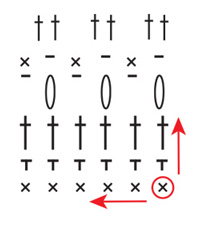
De ida y vuelta:
Cuando se trabaja de ida y vuelta, se trabaja una hilera por el lado derecho de la labor y una hilera por el lado revés de la labor. Cuando se trabaja por el lado revés, el diagrama deberá ser leído en sentido contrario: de izquierda a derecha (ver la flecha roja por el lado derecho y la flecha azul por el lado revés abajo).
La hilera comienza generalmente con un determinado número de puntos de cadena – el número es equivalente a la altura del punto siguiente, y están incluidos para asegurar que estás comenzando por la parte de arriba del punto siguiente (ver los círculos verdes abajo). Si los puntos de cadena están incluidos en el diagrama (como en este ejemplo) todos los puntos son trabajados exactamente como aparecen. A veces el patrón incluye INFORMACIÓN PARA REALIZAR EL TRABAJO en la parte de arriba de las instrucciones, la cual te indica cuántos puntos debes trabajar al principio de cada hilera, y si estos puntos de cadena sustituyen el primer punto de la hilera (o si son adicionales). Si los puntos de cadena NO están incluidos en el diagrama: seguir las instrucciones dadas en INFORMACIÓN PARA REALIZAR EL TRABAJO.

En redondo:
Cuando se trabaja en redondo, todas las vueltas son trabajadas por el lado derecho: de derecha a izquierda (ver las flechas rojas abajo). De qué manera la vuelta comienza y termina es algo frecuentemente mostrado en un diagrama (ver A.2 abajo – cuadrado verde). De la misma manera como cuando se trabaja de ida y vuelta, la vuelta comienza con un determinado número de puntos de cadena, equivalente a la altura del punto siguiente. Al final de la vuelta, generalmente unes el principio y el fin de la vuelta con un punto bajísimo en el último de los puntos de cadena del principio (ver cuadrado azul abajo). Es decir: los puntos de cadena en A.2 = el principio de la vuelta, mientras que el punto bajísimo en A.2 = el fin de la vuelta.
Si tienes que trabajar varias repeticiones del diagrama (A.1) (es decir, es repetido varias veces en la vuelta) trabajas hasta el último punto y, después, comienzas nuevamente en el primer punto en la misma hilera de A.1. NOTA: en este ejemplo, SOLO se repite A.1, A.2 muestra cómo se trabaja el principio y el fin de toda la vuelta.

Varios diagramas diferentes trabajados consecutivamente en la hilera/vuelta:
Si estás trabajando varios diagramas diferentes uno después del otro en la misma hilera/vuelta, trabajar de la manera siguiente: Trabajar la 1ᵃ hilera del diagrama 1, continuar con la 1ª hilera del diagrama 2, después la 1ª hilera del diagrama 3, etc. RECUERDA: si estás trabajando de ida y vuelta, los diagramas tendrán que ser trabajados en sentido contrario por el lado revés – es decir: comenzar con el diagrama 3, después el diagrama 2 y, por último, el diagrama 1. Son también trabajados en sentido contrario, como habitualmente.

Diagramas circulares:
Cuando se trabaja en un círculo, es decir que comienzas en el centro y trabajas en dirección hacia afuera, esto generalmente es mostrado en un diagrama circular. El diagrama puede mostrar el círculo entero – en este caso cada símbolo es trabajado exactamente como aparece, o el diagrama puede mostrar una parte del círculo, que después es repetido un determinado número de veces para formar un círculo entero.
Círculo entero:
En un diagrama de círculo entero, comienzas por el símbolo en el centro del círculo: generalmente un pequeño círculo representando un determinado número de puntos de cadena, fijado con un punto bajísimo (ver el círculo rojo abajo). De la misma forma a cuando se trabaja en redondo, la vuelta comienza con un determinado número de puntos de cadena (equivalente a la altura del símbolo siguiente) y termina con un punto bajísimo en el último de estos puntos de cadena – es decir: equivalente a A.2 en nuestro ejemplo anterior (ver cuadrado azul) – NOTA: cuando los puntos de cadena son mostrados en el diagrama, ellos NO sustituyen ninguno de los otros símbolos, y cada símbolo es trabajado exactamente como aparece. Si los puntos de cadena SUSTITUYEN cualquier punto, esto habrá sido retirado del diagrama.
Se trabaja en el sentido contrario a las agujas del reloj: de derecha a izquierda, 1 símbolo después del otro (ver la flecha roja abajo). Los puntos de la primera vuelta generalmente son trabajados ALREDEDOR del anillo de puntos de cadena, lo que significa que colocas la aguja de ganchillo A TRAVÉS del centro del anillo de puntos de cadena, coges el hilo y lo pasas nuevamente a través del anillo (trabajando el punto como se hace habitualmente) – No trabajas el punto EN ninguno de los puntos de cadena, más bien ALREDEDOR del anillo de puntos de cadena. Al final de la vuelta, unir el principio y el fin con un punto bajísimo y comenzar la segunda vuelta del diagrama: la segunda vuelta más próxima al centro (ver la flecha verde).

Fracción de un círculo:
Si el diagrama representa solamente una fracción (parte) de un círculo, esto es porque esa fracción es repetida un determinado número de veces en redondo para formar un círculo entero. Comienzas por el símbolo de la parte de abajo (ver el círculo rojo) y trabajas de la misma manera como para un CÍRCULO ENTERO, pero A.2 será repetido un determinado número de veces en redondo. De la misma manera como cuando se trabaja en redondo, generalmente hay un diagrama separado que ilustra cómo comienza y termina la vuelta (ver A.1, cuadrado azul abajo). Comienzas por la hilera del diagrama más próxima al anillo de puntos de cadena, en la parte de abajo del diagrama, trabajas el(los) punto(s) de cadena de A.1, después trabajas el(los) símbolo(s) de A.2 (en la primera vuelta es solo 1 símbolo) y repites el(los) símbolo(s) de A.2 el número de veces indicado en el patrón.
Al final de la vuelta, unes la vuelta con el punto bajísimo de A.1. Cuando la primera vuelta esté hecha, continuar con la vuelta siguiente: la segunda vuelta más próxima al anillo de puntos de cadena (ver la flecha verde abajo).

Diagramas cuadrados / jacquards:
Algunos diagramas de ganchillo son mostrados en un diagrama de cuadrados, en el que 1 cuadrado = 1 punto. El tipo de punto a trabajar generalmente será explicado en las instrucciones del patrón, mientras que el propósito del diagrama es mostrar con qué colores se debe trabajar los puntos (ver el círculo rojo abajo = definición de los símbolos).
Trabajas como está explicado arriba, dependiendo de si trabajas DE IDA Y VUELTA, EN REDONDO o un DIAGRAMA CIRCULAR.


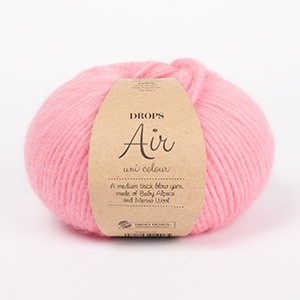







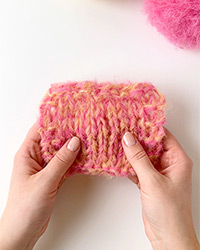
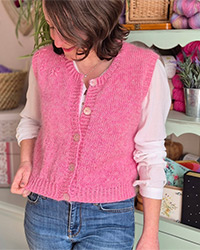
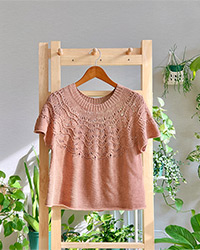
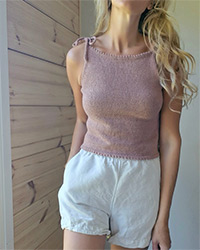
Por favor, me encantaría hacer este poncho serena, pero me cuesta entender el paso a paso. Tendrán otra forma de poder estudiarlo?? Muchas gracias. Espero su respuesta
26.05.2020 - 00:09